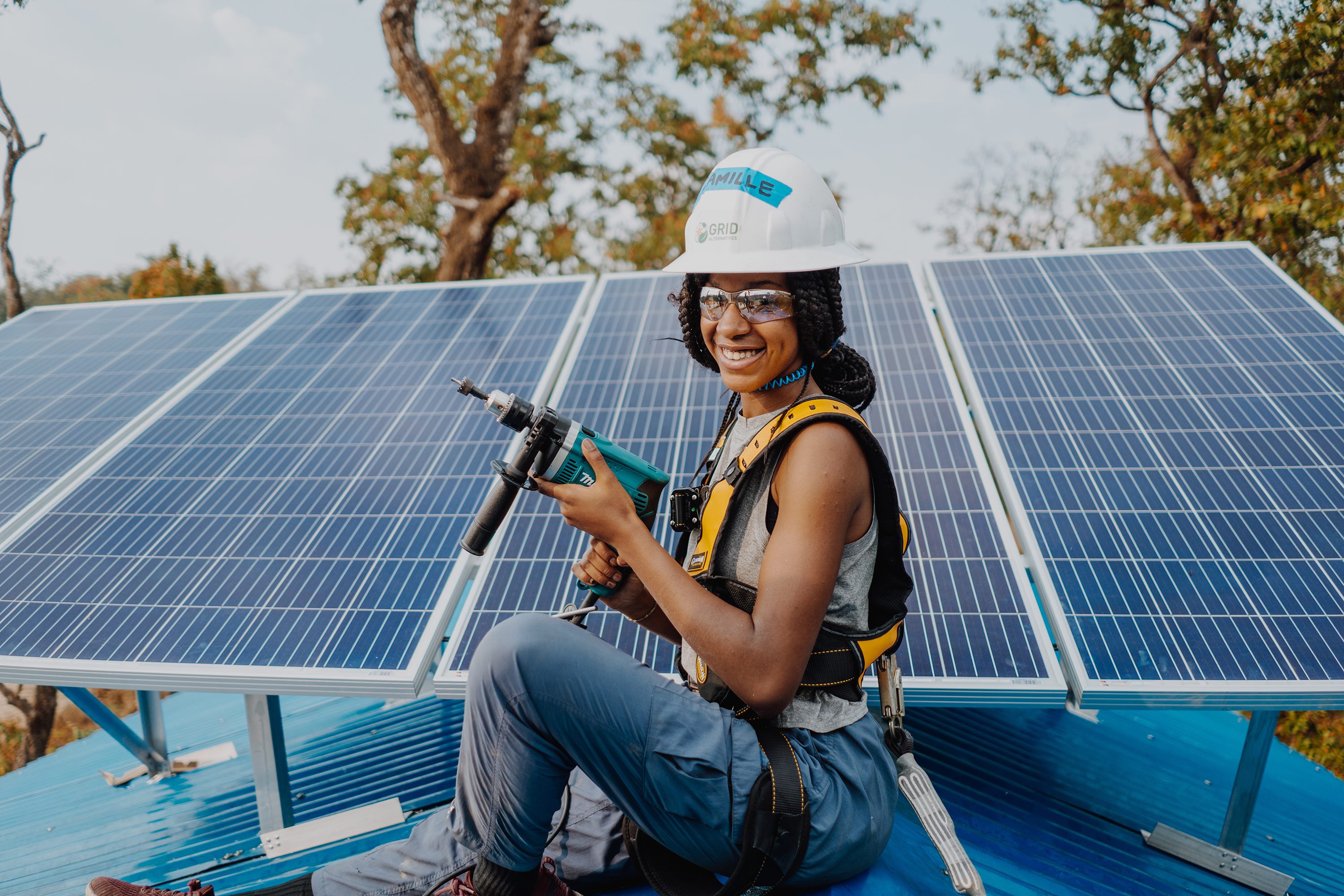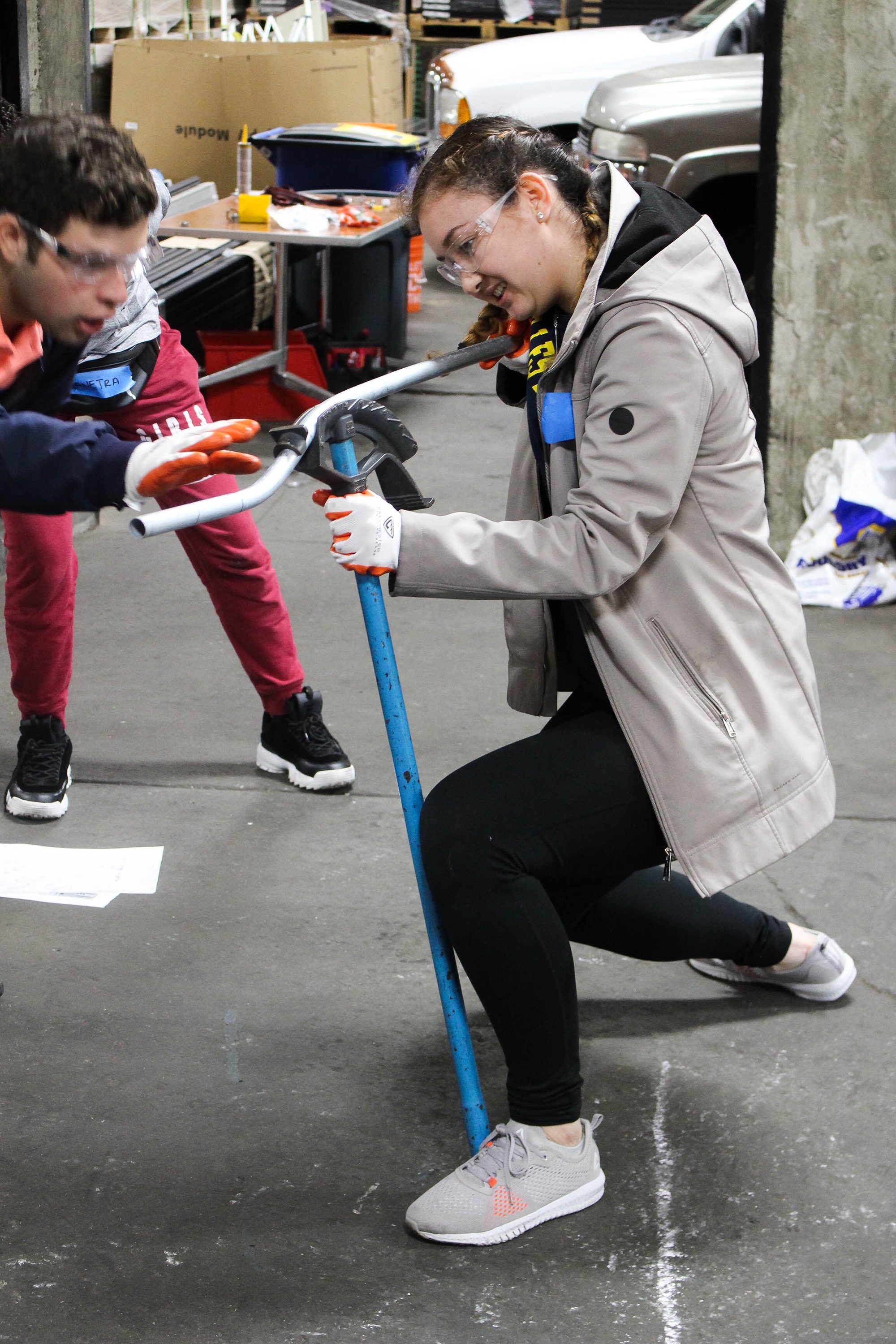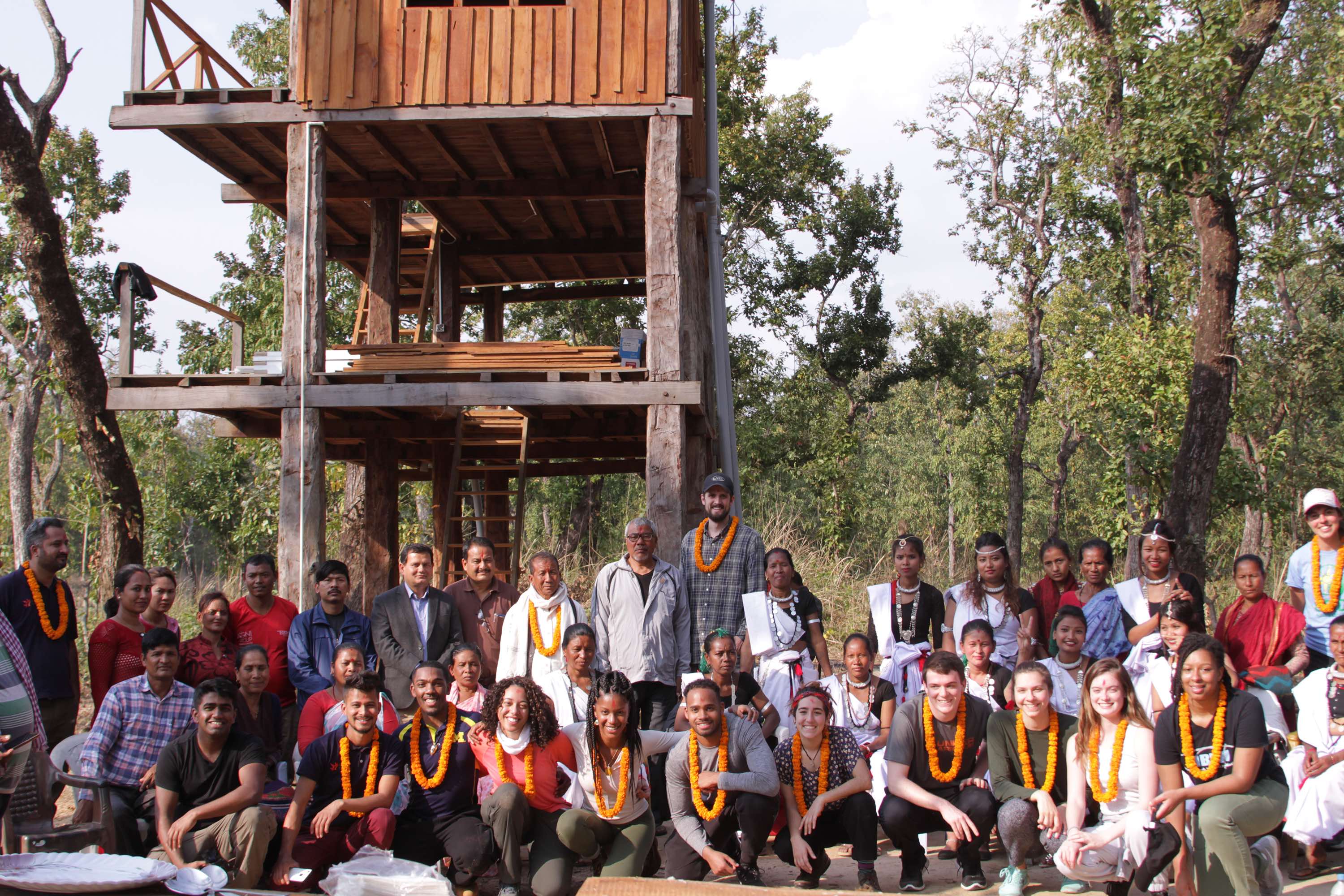Building community through clean energy
From Long Beach, CA, to a Nepalese national park and world heritage site, undergrads Ashley Gee and Camille Burke came away with unforgettable experiences and a greater appreciation for how engineering can change the world for the better.

 Enlarge
Enlarge
Deep in the broadleaf forests of southern Nepal, on top of a watchtower that pierced the tree canopy, Camille Burke – a junior in Electrical Engineering – carefully navigated the steeply sloping roof as she helped install solar panels. She shared the roof with another student while other members of the team stood on the platform below, helping to hand up tools and supplies.
“You good?” someone would ask. The answer would be a meek and rather unconvincing, “Um, yeah, totally,” for the wind made the trees about them groan and the people on the actual ground far below looked like tiny action figures.
The goal of the project was to convert an old watchtower that was completely devoid of power into a fully-functioning wildlife-observation center that could house people overnight. In addition to the solar panels, Burke and her team were charge with installing fans, lights, switches, and outlets, among other necessary infrastructure.
The project was organized by the U-M student group GRID Alternatives Students for Sustainable Energy, an affiliate of the NGO GRID Alternatives. GRID Alternatives sends students to underprivileged communities around the world to install solar panels to provide clean, affordable energy to homes and communities.
“Every time there’s a technological advance, there’s a huge demographic of people that are left behind, and it’s usually an economic disadvantage,” Burke says. “I really like that Grid Alternatives believes that things like renewable energy and these more progressive technological advances should reach underprivileged or geographically disadvantaged communities as soon as everyone else.”

 Enlarge
Enlarge
While Burke worked in the heart of a world heritage site (Chitwan National Park), Ashley Gee, a junior in Electrical Engineering, was installing solar panels in underserved communities in Long Beach, CA.
In Long Beach, there are many mining operations near low-income areas, which worsens the air quality and leads to lower quality of living and health. The additional burden of struggling to pay energy bills only makes matters worse. GRID attempts to lessen the burden on these communities by installing solar panels for free.
“We were able to meet the homeowner where we were installing the panels,” Gee says. “She and her entire family lived there, so they needed a lot of energy to provide for all of them. She was really, really grateful for what we were doing.”
Gee became interested in GRID when they gave a presentation to the Society for Hispanic Professional Engineers, of which she’s a member.
“I thought that this would be perfect, because it combines my interest in engineering and working with underprivileged communities,” she says.
Burke did a GRID Alternatives trip last year that partnered with a Native American tribe. The experience was one of the most impactful of her life, especially because GRID ensures that they maintain relationships with each community they work in.
“You can’t just come in somewhere and do something and then expect the community to assimilate to whatever you’ve done,” Burke says. “You really have to learn what the community needs and try to do something that integrates into their daily life, and GRID does that.”

 Enlarge
Enlarge
GRID provides resources for the community before and after the installation is complete. They provide lifetime support in addition to education about how to work with the energy systems that they provide. They also expand their relationship beyond solar panels. Burke’s group is still in touch with the Native American tribe they worked with and has plans to support other community projects for them in the future.
In addition to the community-building aspects, GRID gives students the opportunity to experience real-life engineering, including what it’s like to work as part of a multi-disciplinary team. There were about ten other students (50/50 men and women) on both Gee and Burke’s trips, and while most were from U-M, they hailed from departments across the university including Mechanical Engineering, Chemical Engineering, Public Policy, and the School for Environment and Sustainability.
“It was really amazing to see how relying on each other’s expertise genuinely comes to life,” Burke says. “We all played to our strengths based on our skillset to help others, and it was really awesome to see that.”
I think everybody should have an experience like this.
Camille Burke, Electrical Engineering undergrad
The trips begin with an intensive course about the technical installation, engineering background, and safety requirements. The teams are led by experienced GRID professionals, who teach the students how to use the necessary tools and manage the project as a whole. They lead group discussions about both the engineering aspects of solar panel installation as well as the cultural context and history of energy access.
Burke and Gee say that the emphasis on understanding the non-engineering aspects of the issues made the experience even more rewarding.
“Engineering is not just about the numbers, it’s not just about the lab results, it’s about the impact, it’s about who it’s delivered to in the end, it’s about how it’s applied in real life,” Burke says. “You gain a more well-rounded view of what you do as an engineer when you get out of the lab. I think everybody should have an experience like this.”
For Gee, one of the most impactful parts of the trip was learning about other ways GRID and the clean energy industry is working to improve lives. GRID took her group to Homeboy Industries, an organization that works to rehabilitate former gang members. Homeboy Industries works to provide mental/emotional support and career training to help people reenter the workforce with the specialized tools and training they need to obtain good jobs. Gee’s GRID project manager was a graduate of a Homeboy Industries’ program, and learning about how Homeboy Industries and GRID helped change his life was an inspiration she’ll never forget.

 Enlarge
Enlarge
For Burke, nothing was more powerful than being welcomed into a place that was so very different from everything she knew. While there were many challenges to navigating Nepal, such as lack of a strong transportation system and severe jet lag, nothing was more difficult than the language barrier – but it didn’t seem to matter.
The entire Nepalese community came to greet Burke’s group when they arrived. The community members sang, clapped, and gave each of the students a traditional garland of brilliant orange marigolds as a welcome.
“It was so beautiful,” Burke says. “On both sides, we wanted to make each other feel as safe and happy and comfortable as possible. We couldn’t really speak to each other, yet we felt very welcome and they felt very loved by us. You don’t need language to show that.”









 MENU
MENU 
